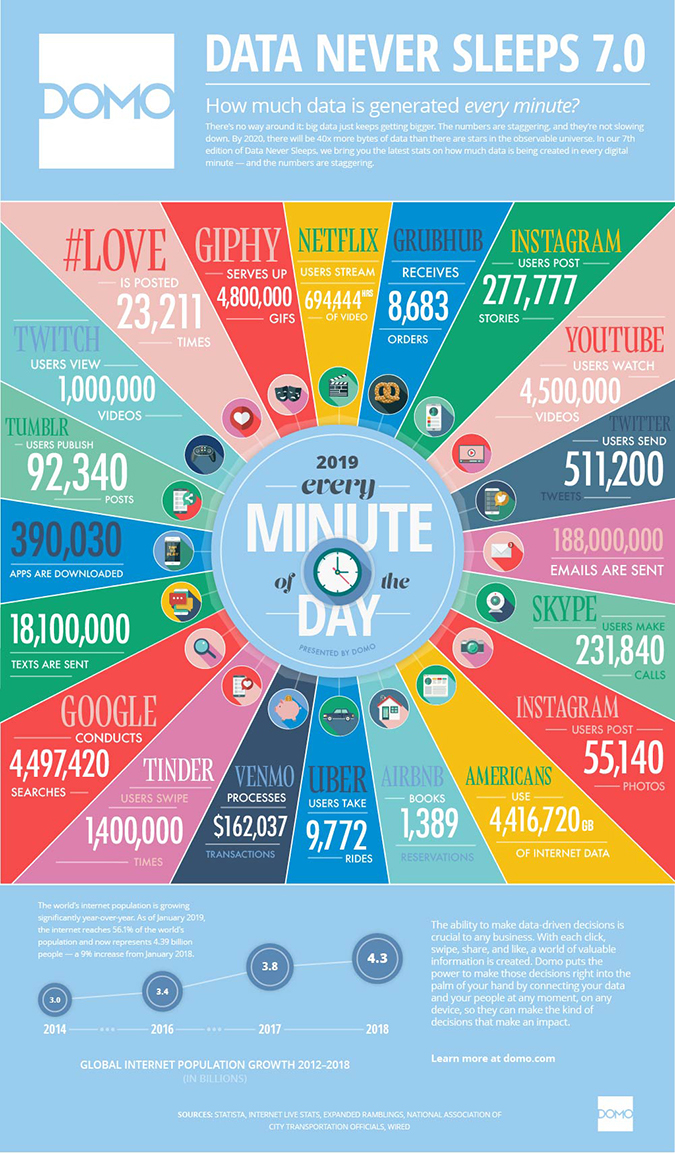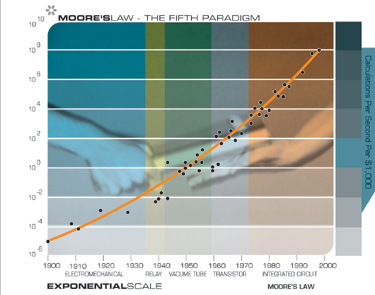
One of my favorite TV ads — one where I actually would laugh out loud — was from Best Buy a couple of years ago. In a snappy montage, they showed adults’ dismay at being behind the technology curve with outdated devices: one woman laments, “I just bought this one” as a new phone is revealed, one man spits out his coffee when he looks up and sees an ad for an “even newer” laptop, and in another scene, a little girl chastises her dad saying, “You bought the wrong TV, Silly Head,” as he holds his new 3D TV while looking at signage promoting a “4D TV COMING SOON.” The commercial did such a good job of summing up the frustration of trying to keep up the ever-evolving technology scene.
Always “on”
Each day, we are facing an overwhelming influx of technology. According to a 2019 Omidyar Network report, Scaling Access & Impact: Realizing the Power of EdTech, the internet now reaches 4.3 billion people (56% of the global population). And we, this group of 4.3B people, are always “on.” Just take a look at the current landscape according to Domo.com’s Data Never Sleeps 7.0 infographic:
Did you find yourself nodding to any of these stats, agreeing with the data? Did you find yourself shocked by any of the data? Just remember… these numbers are representative of every minute of every day. With 1,140 minutes in a day, those numbers skyrocket quickly.
Technology presents exponential change
Now, take a look at the graph below that illustrates Ray Kurzweil’s Law of Accelerated Return. He theorized that technological change isn’t linear; it’s exponential. We won’t experience 100 years of progress in the 21st century, but more like 20,000 years of progress. He estimated that machine intelligence will surpass human intelligence in 2045 — now less than 25 years away.
Mindblowing, isn’t it?
Diffusion of Innovation Theory in education
Consider one more chart — the infamous bell curve. In 1962, Everette Rogers created the Diffusion of Innovation Theory. He claimed that stakeholders are divided into five cohorts, with only 13.5% being Early Adopters. Most of us fall into either the Early or Late Majority groups. Where would you put yourself currently on this adoption curve in your personal life? How about in your professional life? Take a look at this explanatory video from Queensland University of Technology (3:36):
The Diffusion of Innovation Theory speaks to such adoption in our personal lives, which doesn’t usually equate to that in our professional level. Take all of this thinking and consider how it applies to your school community and your practice in the classroom. Our schools tend to be slower to pivot or adopt innovation for a myriad of reasons — the stakes are high when you talk about taking a risk that can affect a child’s learning.
Technology for education — and education for technology
Knowing how to use a tablet for personal use is vastly different than knowing how to use it as a tool for teaching and learning. As teachers, many of us have no prior knowledge or modeling from our past; the same technologies just didn’t exist when we were students. Even the digital natives who are reaching the workforce know tech for personal use and maybe some learning, but to teach with it is yet another nut to crack.
“Schools must prepare students for jobs that do not yet exist, creating ideas and solutions for products and problems that have not yet been identified, using technologies that have not yet been invented.”
– Linda Darling-Hammond, Stanford University
Nowadays schools are pressured to be more up-to-date and innovative as families and their children discover the advantages and benefits of devices and platforms’ latest and greatest advancements and feature sets. Our students need to be prepared for the future workforce. Yet Deloitte found that 4/10 people thought that schools were behind the curve. They also reported that 41% of a 2016 Digital Education Survey respondents thought that one of the biggest barriers is that “teachers aren’t trained on using educational technology.” Educators often speak to a “chasm” that exists between those teachers who are the eager Early Adopters (or “Edtech Enthusiasts”) and the rest. I often find myself sharing this MindWires cartoon which illustrates the literal pitfall of trying to get educators to cross the chasm. That jump between Early Adopters and the Early Majority can be daunting without any infrastructure.
I probably posed more questions than answers in this article, but it was all in an effort to encourage lifelong learning. Technology is evolving rapidly and, as educators, we have a responsibility to understand the potential impact on our students’ learning today so that they are the most prepared for our world tomorrow. Thus I leave you with the five last questions, framed around the five Ws:
- WHO: Whom can you turn to for help and inspiration inside and outside of your school community?
- WHAT: What are your goals for leveraging technology in your classroom?
- WHERE: Where can you find edtech-related professional learning opportunities?
- WHEN: When can you find time to collaborate with others (especially those Early Adopters!)?
- WHY: Why has or hasn’t edtech adoption happened more readily in your school?
Darri Stephens is a former member of Teach for America and a seasoned educator, with more than 10 years’ experience in Los Angeles and New York City public schools. She’s a published author, who has also worked for education-focused media companies including Nickelodeon, IMAX, EdSurge, and Discovery Education. With master’s degrees in education from both Harvard and Stanford, she’s passionate about creative curriculum development that pushes boundaries, especially considering the influx of today’s technologies. Her most recent positions as Senior Director of Content at Common Sense and Director of Education at Wonder Workshop underscore her love of instructional design, writing, and the ever-changing edtech world — so much so that she has now founded her own content consulting agency, Darrow Ink.
Categorized as: Current Events
Tagged as: Educational Technology, Educational Technology Leadership


